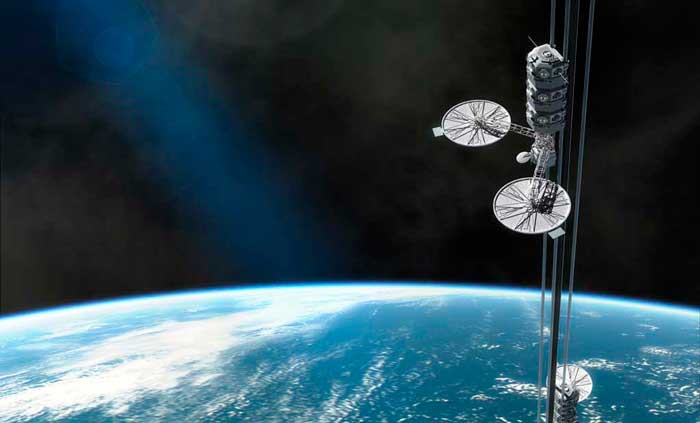Obayashi is a construction company from Japan cooperating with the University of Shizuoka. Its representatives regularly report that they want to build a space elevator. The engineers are constantly stopped by the lack of a material that would be optimal for the cable. According to rumors, a real breakthrough is expected in the project. In the nearest future, a prototype cable with a moving mechanism is going to be presented. However, the scale is still small.
Japan Aerospace Exploration Agency is going to experiment with the use of two CubeSat satellites. Between them, they want to pull up a ten-meter cable made of carbon fiber. It is along this cable that the capsule with the dimensions of 6x3x3 cm will slide. The experiment will be conducted in space and monitored by satellite cameras. As a result, the authors of the project expect to discover the real advantages, disadvantages and difficulties in the construction of space elevators.
As engineers believe, carbon nanotubes are the most promising way of solving this problem. This may prove to be the only possible material. Nanotubes will be used to build a construction with a 400-meter base on the Earth and the height of 96,000 kilometers. It will weigh 12,500 tons.
The second end of the cable will be attached to the satellite in the orbit. Will it remain at the same spot with such an anchor? The upcoming experiment should help scientists answer all the questions.
The Japanese plan to build a real space elevator by 2050. The promise is very bold. But behind it, there is a great financial benefit. Delivering each kilogram of cargo in this elevator may cost up to $250. While missile shipments cost $25,000-100,000 per kilogram. Whatever the price of this development, if the elevator works reliably, it will pay off very quickly. After all, all the alternatives will not be competitive.







